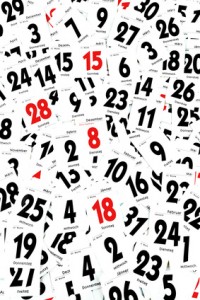 Every now and then, I like to throw in a rather off-beat topic in this series, and today is one of those posts.
Every now and then, I like to throw in a rather off-beat topic in this series, and today is one of those posts.
Most people these days likely don’t give a second thought to the idea of stereophonic sound — that is, a recording of sound that is enhanced by being played on two tracks simultaneously, producing a more natural effect, and a richer, fuller sound experience. It isn’t that long ago, however (within my lifetime… although perhaps that *is* a long time ago for some of my readers!) that monaural sound was all there was in the recording industry. One track, a thinner sound.
On March 27, 1958, stereophonic records were introduced, and the recording industry was revolutionized, not quite overnight, but within the next decade.
I found an excellent, easily understandable explanation of stereophonic sound on the IEEE Global History Network. Rather than recapitulating what they have said, I urge you to read the post at the link (it’s not too long) then come back.
As I researched this topic, I found that most who write about it mention the fact that since people have two ears, the sound enters each ear slightly differently, and stereo makes the most of this to provide a natural, full listening experience.
I have to confess that the concept of how sound is heard differently from each side is pretty well lost on me, as I have been profoundly deaf in my right ear since infancy. I suppose one could say I hear in mono rather than in stereo. Frankly, since I’ve never known any different, I can’t imagine hearing from both sides at once — it seems as though it would be an overwhelming thing!
However, I can appreciate the difference stereo has made to the richness of musical tone in recordings, and I am grateful for that advance in science that allows us to feel as if “we are there” when we listen to music.

How interesting. My brother probably knows all about this, he had lots of amps and nows sells high quality headphones for a living. http://www.iheadphones.co.uk :0)
Since I live in a house full of musicians, several of whom actively record, I have great appreciation for the qualities of sound and recording, and get to listen to endless discussion over whether tracks are properly layered and mixed etc. 🙂 It’s very interesting and fun, and I love going to the recording studio!
This is probably a rather simplistic way of thinking of this, but for me, it reminds me of having just a regular TV at home, no surround sound, hearing everything only through the speakers. I suppose that would be a sort of basic experience. But to then go to a friend’s house that has surround sound where the sounds generated approach you from both sides, the hearing experience is certainly enhanced. First time I experienced surround sound it was a bit overwhelming because the same level of sound seemed on a ‘giant’ scale, but it is easily appreciable.
BETH!!! I didn’t know about your ear! Goodness. Then it is all a mystery…something akin to not knowing what growing up with siblings is like. We can’t ever know what it’s like to have brothers and sisters, not really, because we just didn’t.
Wonderful post! You brought back a lot of memories. One of my uncles was a pioneer in broadcasting. He was at one of the first “FM” stations in the US. He had banks of giant reel-to-reel tape decks at home. He let me listen to the sound of a train running along tracks, through a tunnel, and out the other side, all the while blowing its whistle. Then an airplane taking off. WOW!!!!!! WOW!!!!!!! Honesty, I ducked! “Stereo” was incredible to ears accustomed to mono. Even better, when the record companies sent records to the radio station for play, they often sent duplicates, esp of the new-fangled stereo ones. My uncle gave me the dups when he could. It was a classical music station so I got a lot of wonderful music.
1958! Long time ago.
W’ve seen so many changes…LOL…!!!!
::runs back::
Just found this info on my Uncle’s old station: [It was] … the very first station in the country to broadcast in stereo under an experimental license assignment from the FCC, which wanted to test this new-fangled thing called stereo before they approved it universally. That was 1957.
What an amazing time to be alive!